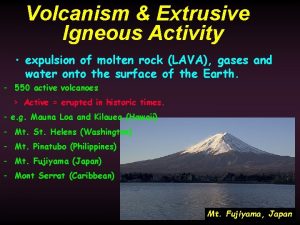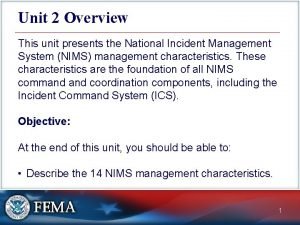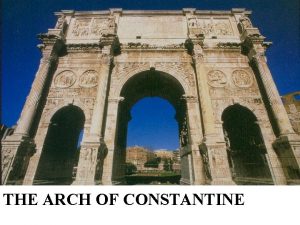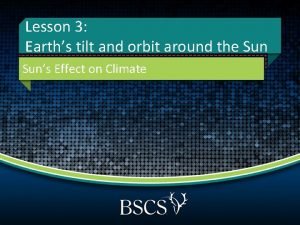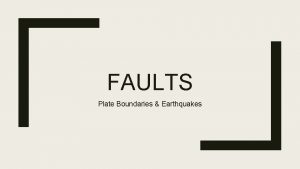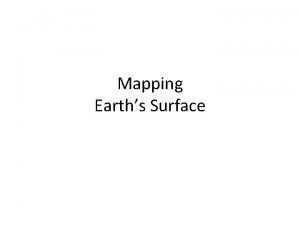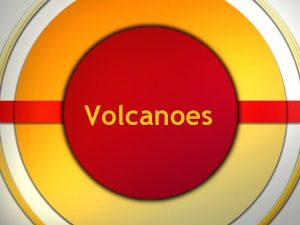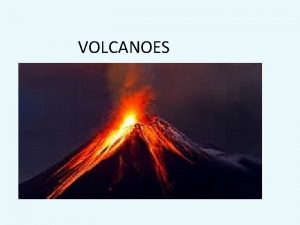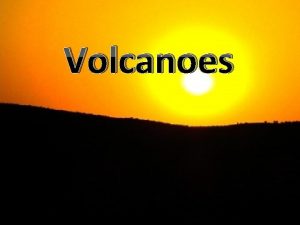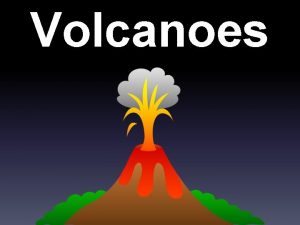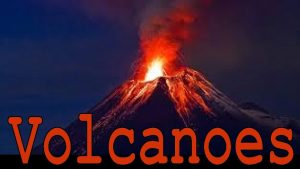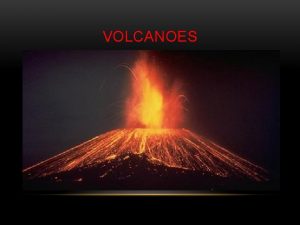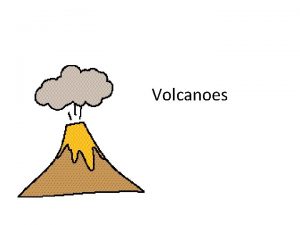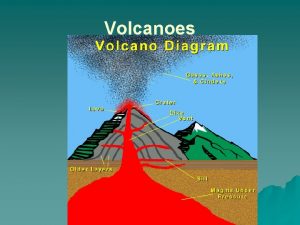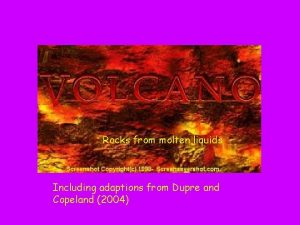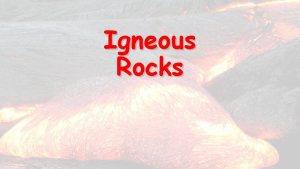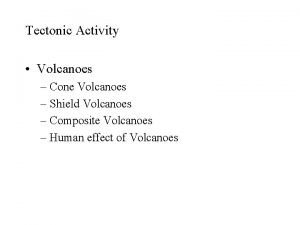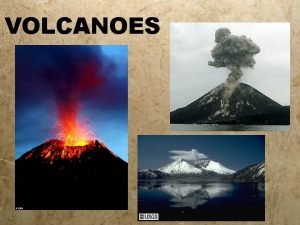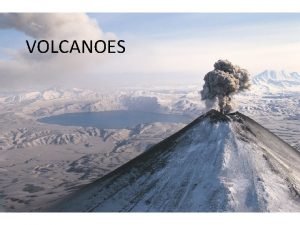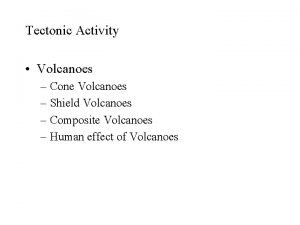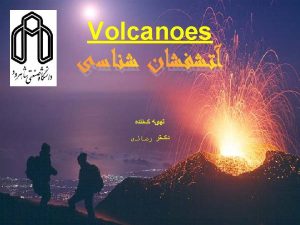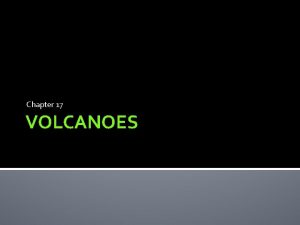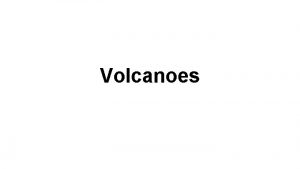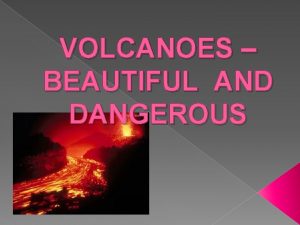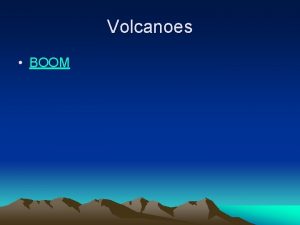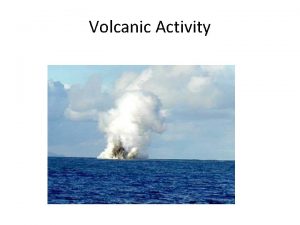Volcanoes Molten rock reaches Earths surface Depending on


























- Slides: 26

Volcanoes Molten rock reaches Earth’s surface Depending on viscosity and temperature, it either flows out or explodes

Why do volcanoes happen? • Subsurface materials heat up for various reasons • Liquid rock is less dense than solid, so it rises • Upward force from rising magma and melting from hot rock meeting cold produce gaps in overlying rock • When magma reaches surface, it is more dense than air, so it stays and cools

Lava types • Basaltic lava -- very hot, not very viscous – Flood basalts - large areas covered by basaltic lava, e. g. Columbia River basalts, Deccan Traps, lunar maria • Granitic lava -- colder, more viscous – Tends to produce explosive eruptions

Columbia River Basalts, WA & OR

Devil’s Tower, WY

Basaltic flows • Pahoehoe (means "ropy") - highly fluid lava which has thin, glassy skin under which hot lava flows • Aa - forms after gases have departed and cooling has begun. Skin is big and chunky -- very sharp

Basaltic flows • Pillow basalt -- evidence of underwater eruptions -- surface chills quickly, but flow continues • Bubbles -- or vesicles -- gases exist in lava but stay in solution under pressure under earth

Lava Flow, Hawaii

Lava Toe, Hawaii

Pyroclastic Eruptions • Gas is trapped in magma, but magma is too viscous to flow through cracks • When pressure is released and gas comes out of magma, whole mountaintop can explode • Pyroclasts -- fire rocks

Pyroclastic Eruptions • Includes ash and fine material, but can be a lot bigger (one house sized piece traveled 10 km in one eruption) • Ash can stay aloft, entering upper atmosphere (e. g. Pinatubo) • If particles settle while still hot, they form tuffs -- welded together bits

Pyroclastic Eruptions • Pyroclastic flow -- big hazard near continental volcanoes - e. g. Japan, Mont Pelee on Martinique (1902) • Pyroclastic flow can be very hard to predict – Prof. Landes: "The Montagne Pelee presents no more danger to the inhabitants of Saint Pierre than does Vesuvius to those of Naples" -- died next day in eruption

Mont Pelee, West Indies 1902

Nuee Ardente Pyroclastic Eruption

Eruption Styles • Lava Eruptions -- lava cone built by successive flows from central vent • Basalt -- creates shield volcanoes like Mauna Loa - big, broad gentle slopes • Rhyolite -- creates small dome in crater, plugs up areas below • Pyroclastic eruptions create concave cone with a summit vent

Mount Saint Helens Washington Erupted May 18, 1980

Mount St. Helens


Mount Saint Helens • Stratovolcano - mixture of lava eruptions and explosive ash eruptions • 1980 eruption was very explosive • Mountain lost its top 400 meters of elevation within minutes

Before the eruption

After the Eruption


Mount Saint Helens Mud Flow

Krakatau August 26, 1883 • Phreatic eruption of an entire island (English name is Krakatoa) • Loudest noise in recorded history (Heard in Australia 2000 km away) • Eruptive force of 100 million tons of TNT • 5000 times the force as the first atomic bombs • 36000 people drown in Tsunamis


Anak Krakatau
 Igneous vs metamorphic
Igneous vs metamorphic Stratovolcano plate boundary
Stratovolcano plate boundary To avoid overburdening the incident command
To avoid overburdening the incident command Earths interior
Earths interior Earths major crustal plates
Earths major crustal plates Arch of constantine reliefs
Arch of constantine reliefs Biome near the equator
Biome near the equator Whats the name of earths moon
Whats the name of earths moon Thickest layer of the earth
Thickest layer of the earth Earths layers foldable
Earths layers foldable What does the earths tilt cause
What does the earths tilt cause Brown earth soil ireland
Brown earth soil ireland Earths orbit seasons
Earths orbit seasons What does earths tilt do
What does earths tilt do Most abundant element on earth
Most abundant element on earth Continental drift theory
Continental drift theory Earths early atmosphere contained
Earths early atmosphere contained Atmosphere definition science
Atmosphere definition science Earths roation
Earths roation Earths physical features
Earths physical features Earths boundaries
Earths boundaries How thick is the earths crust
How thick is the earths crust Earths crust
Earths crust Lithosphere
Lithosphere What shape is earths orbit
What shape is earths orbit Whats a natural satellite
Whats a natural satellite Honey as fertilizer for plants
Honey as fertilizer for plants

